Overview
The article delves into the indispensable applications of 0.5 ml microcentrifuge tubes across a spectrum of laboratory settings. These tubes play a pivotal role in:
- Specimen storage
- Sample preparation
- Molecular biology
- Clinical diagnostics
- Pharmaceutical research
- Environmental testing
- Educational laboratories
- Biochemistry
- Quality control
- Research and development
Each segment highlights the tubes' reliability, versatility, and effectiveness, which significantly enhance laboratory workflows and uphold the integrity of samples. This underscores their critical contribution to contemporary scientific practices, establishing them as essential instruments in the pursuit of excellence in research.
Introduction
The versatility of 0.5 ml microcentrifuge tubes establishes them as a cornerstone in laboratory settings, fulfilling a multitude of functions across various scientific disciplines. From molecular biology to environmental testing, these small yet robust containers facilitate precise sample handling and storage, thereby ensuring the integrity of valuable specimens. As laboratories increasingly strive for efficiency and accuracy, a pivotal question emerges: how can the innovative applications of these microcentrifuge tubes further enhance research outcomes and streamline workflows?
JM Science Microcentrifuge Tubes: Reliable Sample Storage Solutions
JM Science offers high-quality microcentrifuge tube 0.5 ml containers, meticulously engineered for optimal specimen storage. These containers are constructed from robust materials that effectively prevent contamination, ensuring the integrity of the specimens. Their reliable sealing systems protect against evaporation and leakage, making them ideal for the long-term storage of sensitive materials. Furthermore, their compatibility with a variety of centrifuges significantly enhances their versatility in laboratory applications. Investing in microcentrifuge tube 0.5 ml containers is essential for any laboratory aiming to uphold the highest standards of specimen preservation.
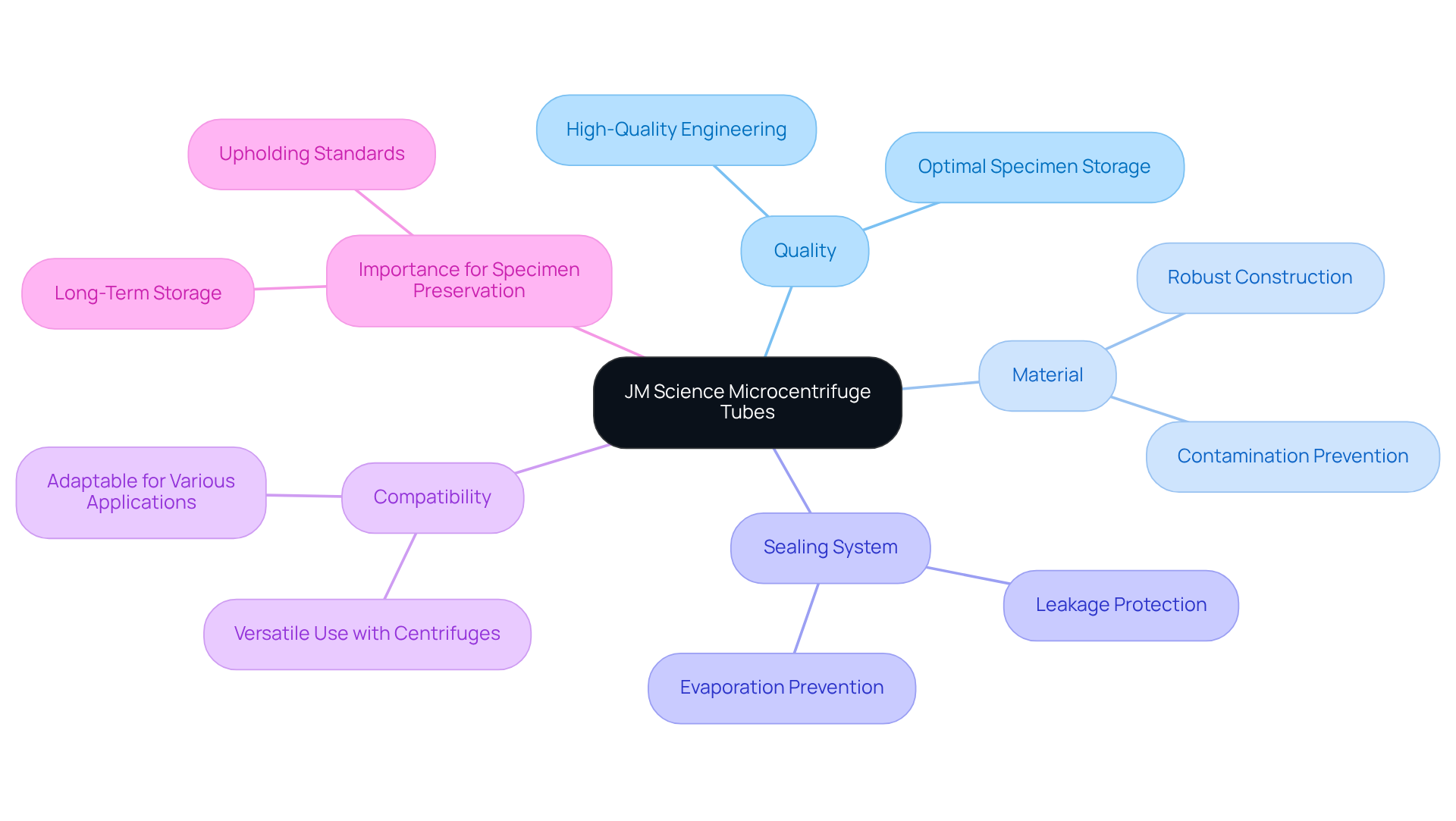
Sample Preparation: Utilizing 0.5 ml Microcentrifuge Tubes for Efficient Lab Work
The microcentrifuge tube 0.5 ml stands out as an essential tool for specimen preparation, thanks to its compact size and ease of handling. Their design allows for precise measurement and mixing of reagents, which is critical in experiments that demand accurate concentrations. This efficiency facilitates quick and effective pipetting, significantly minimizing the risk of cross-contamination. Furthermore, the microcentrifuge tube 0.5 ml is engineered to withstand high-speed centrifugation, ensuring that specimens are adequately processed for subsequent applications. Investing in such high-quality instruments is vital for achieving reliable results in laboratory environments.
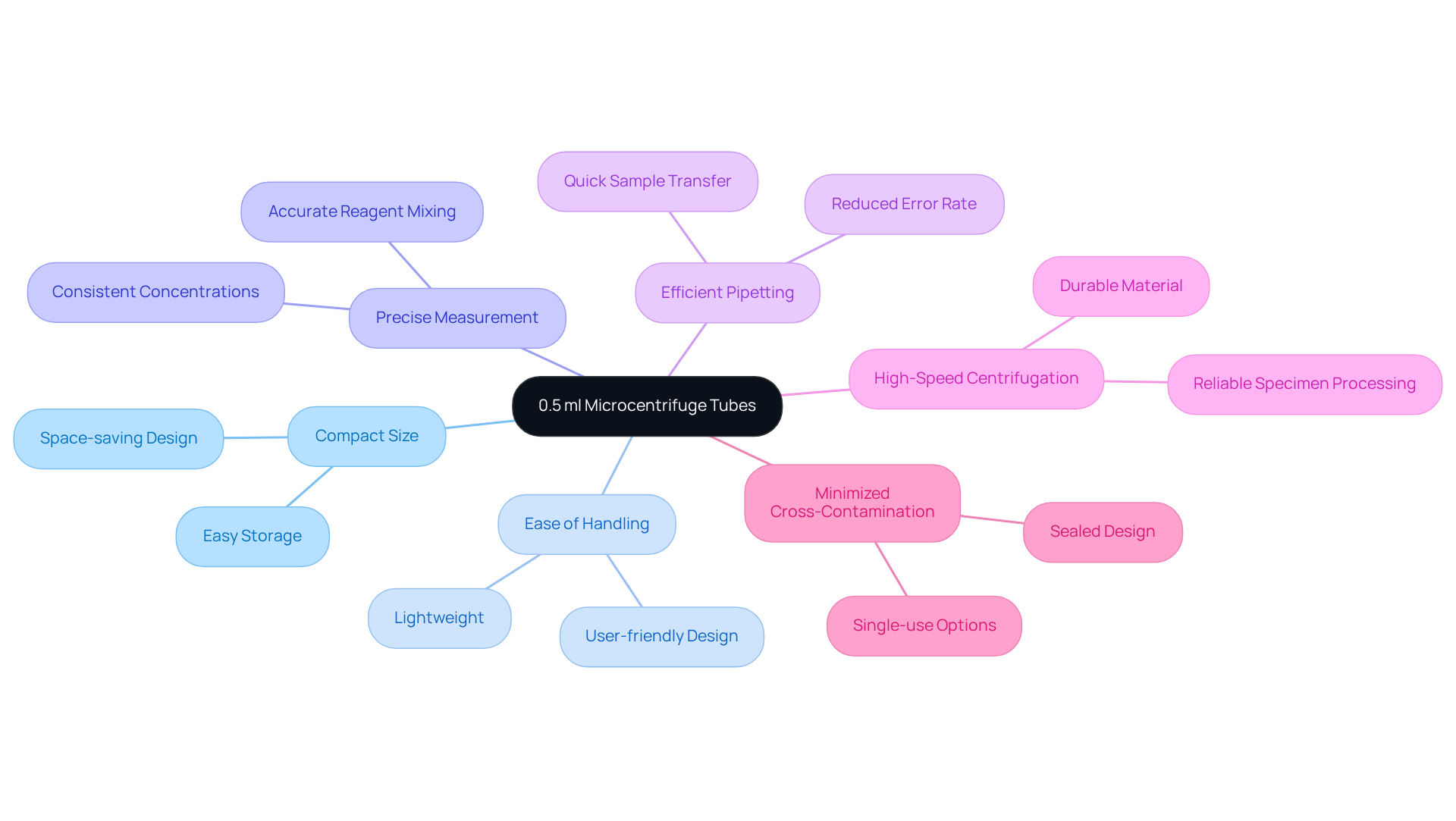
Molecular Biology Applications: Extracting DNA and RNA with Microcentrifuge Tubes
In molecular biology, the use of the microcentrifuge tube 0.5 ml is crucial for the effective extraction of DNA and RNA. Their ideal size allows for the efficient management of precious specimens, significantly minimizing waste. Designed to withstand high centrifugal forces, these cylinders are typically rated for velocities ranging from 14,000 to 18,000 rpm, making them suitable for a variety of extraction protocols. Moreover, their compatibility with various extraction kits facilitates effective lysis and purification of nucleic acids, ensuring high success rates in obtaining quality specimens.
The transparent design of these containers enhances the visualization of contents, aiding in the monitoring of the extraction process. Experts emphasize that the use of 0.5 ml containers can significantly improve nucleic acid recovery. Notably, studies reveal that the SHIFT-SP protocol achieves nearly 100% extraction efficiency. To preserve specimen integrity and ensure reliable outcomes in molecular biology applications, it is essential to follow best practices, such as:
- Inspecting cylinders for flaws
- Adhering to manufacturer instructions
Additionally, the disposable nature of small centrifuge containers reduces the risk of carry-over contamination, streamlining workflow and saving time on cleaning. By utilizing these specialized containers, researchers can enhance their extraction processes, ultimately leading to more efficient and effective results in their molecular biology endeavors.
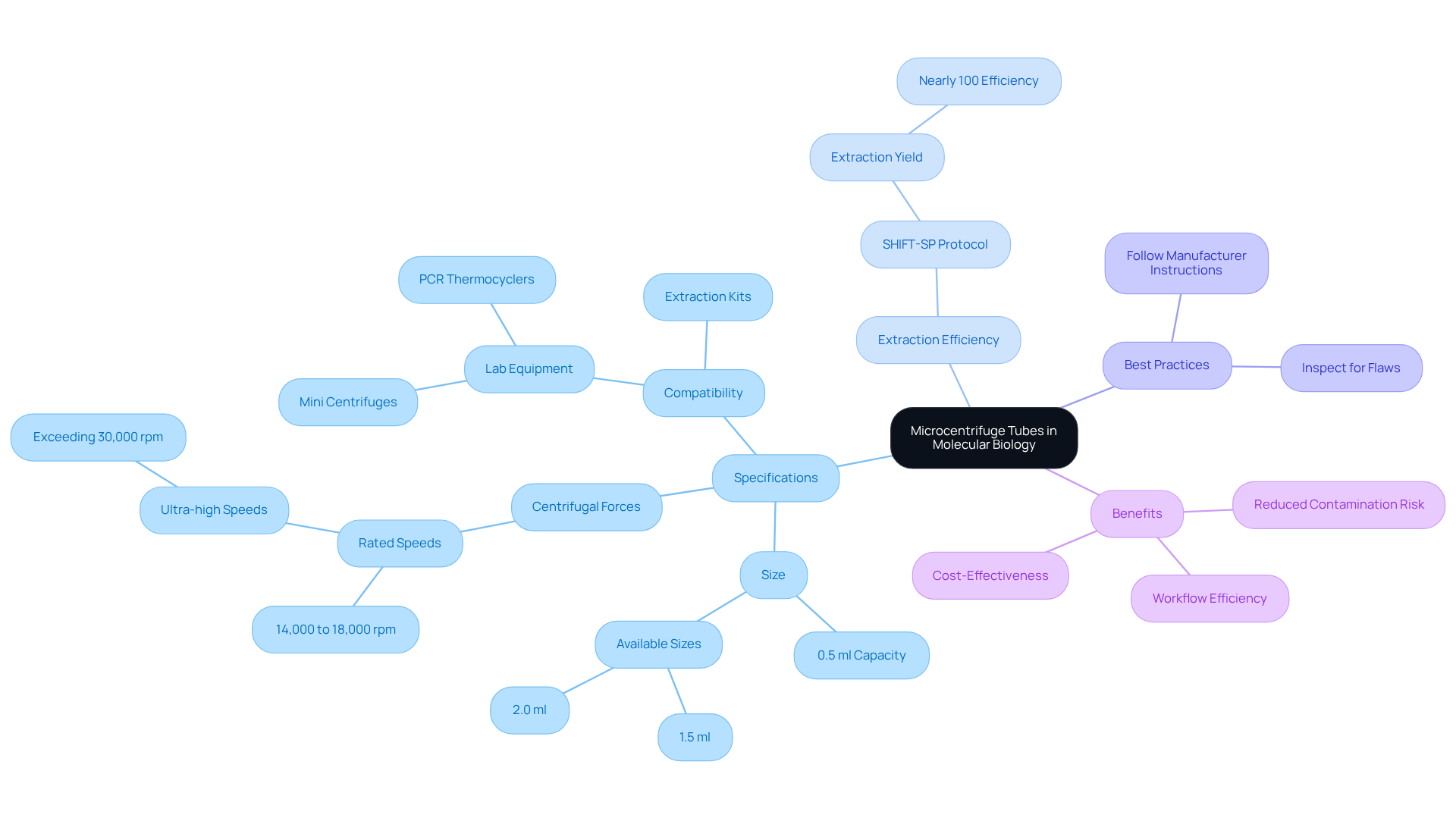
Clinical Diagnostics: Enhancing Sample Collection with Microcentrifuge Tubes
In clinical diagnostics, the collection and transport of biological specimens rely heavily on the use of microcentrifuge tube 0.5 ml. Their secure sealing not only prevents contamination but also ensures that samples remain viable for testing. These microcentrifuge tubes 0.5 ml are particularly advantageous for collecting small volumes of blood or other liquids and are ideal for point-of-care testing and routine laboratory analyses.
Moreover, when utilized alongside Karl Fischer titrators, such as the AQV-300 and AQ-300 models, the microcentrifuge tube 0.5 ml facilitates precise moisture content analysis in pharmaceuticals, ensuring compliance with the Japanese Pharmacopoeia. Their compatibility with various further amplifies their significance in clinical environments, underscoring their essential role in modern diagnostics.
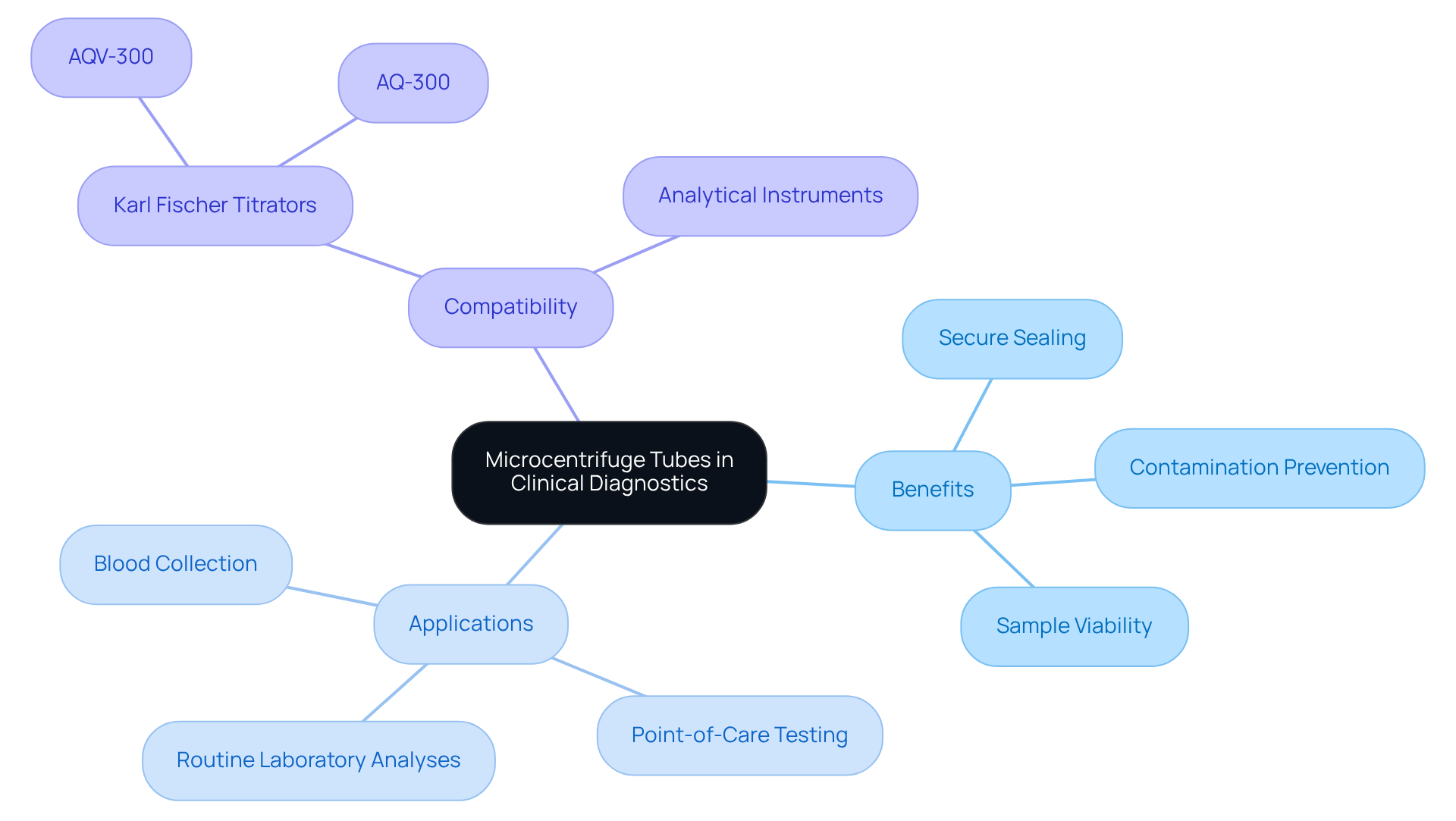
Pharmaceutical Research: Supporting Drug Development with Microcentrifuge Tubes
In pharmaceutical research, the microcentrifuge tube 0.5 ml plays a crucial role in various applications, such as formulation studies and stability testing. Their robust design allows a microcentrifuge tube 0.5 ml to endure high-speed centrifugation, making them ideal for isolating compounds and analyzing drug formulations. Moreover, the use of microcentrifuge tube 0.5 ml is essential for preserving specimens over extended periods, ensuring that scientists can effectively monitor the stability and efficacy of drug candidates throughout their research timeline. The significance of employing high-quality scientific instruments like these cannot be overstated, as they are fundamental to advancing pharmaceutical innovations.
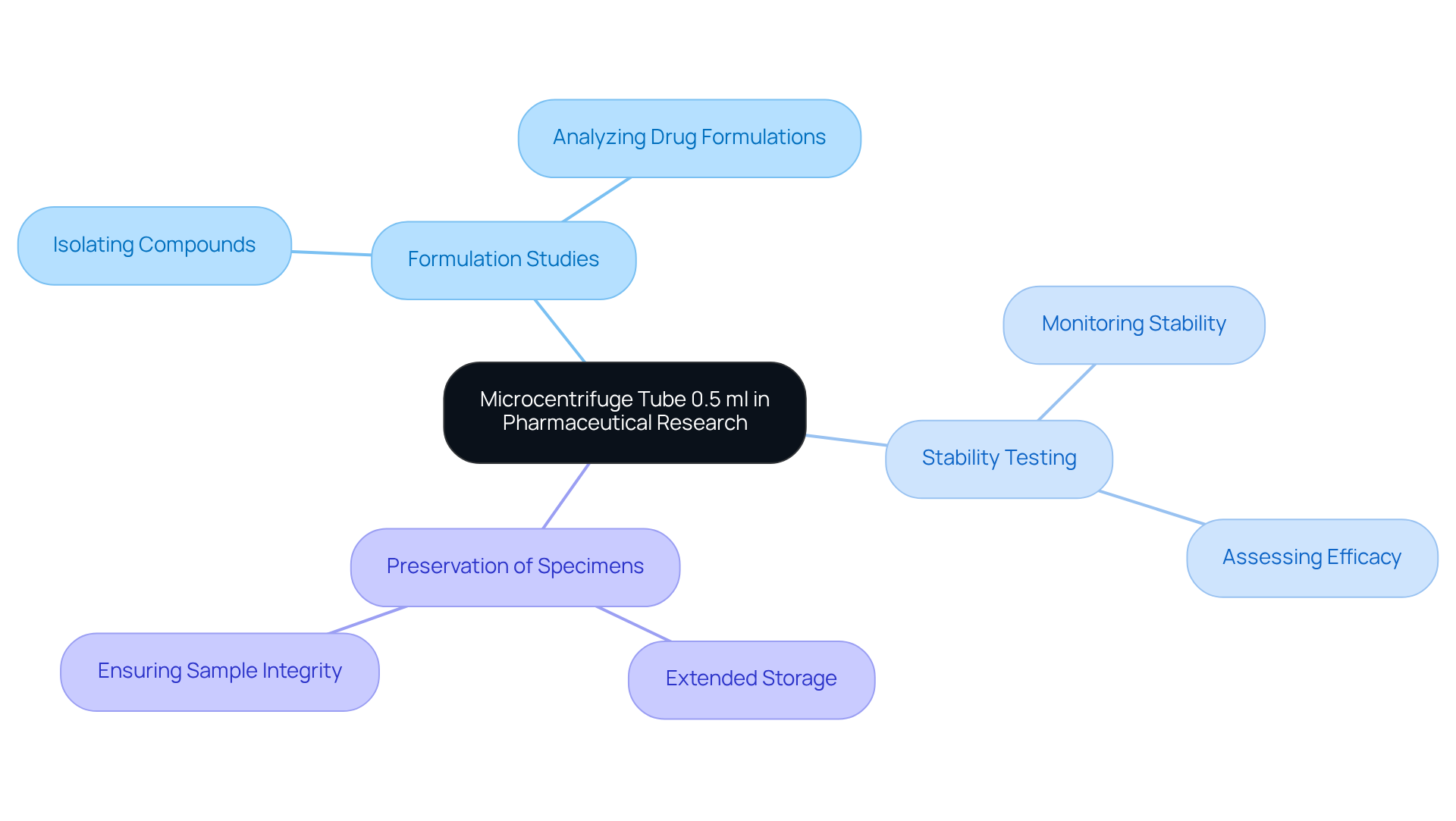
Environmental Testing: Preserving Samples with Microcentrifuge Tubes
Microcentrifuge tube 0.5 ml are indispensable in environmental testing, particularly for the preservation of water, soil, and air specimens. Their airtight seals are engineered to prevent contamination and evaporation, ensuring that specimens remain true to their original conditions. Furthermore, these containers exhibit resistance to a variety of chemicals, rendering them suitable for holding materials that may include hazardous substances. The compact design facilitates easy transport and storage, a crucial factor for field studies. In summary, the reliability and versatility of the microcentrifuge tube 0.5 ml make it an essential tool for any environmental testing initiative.
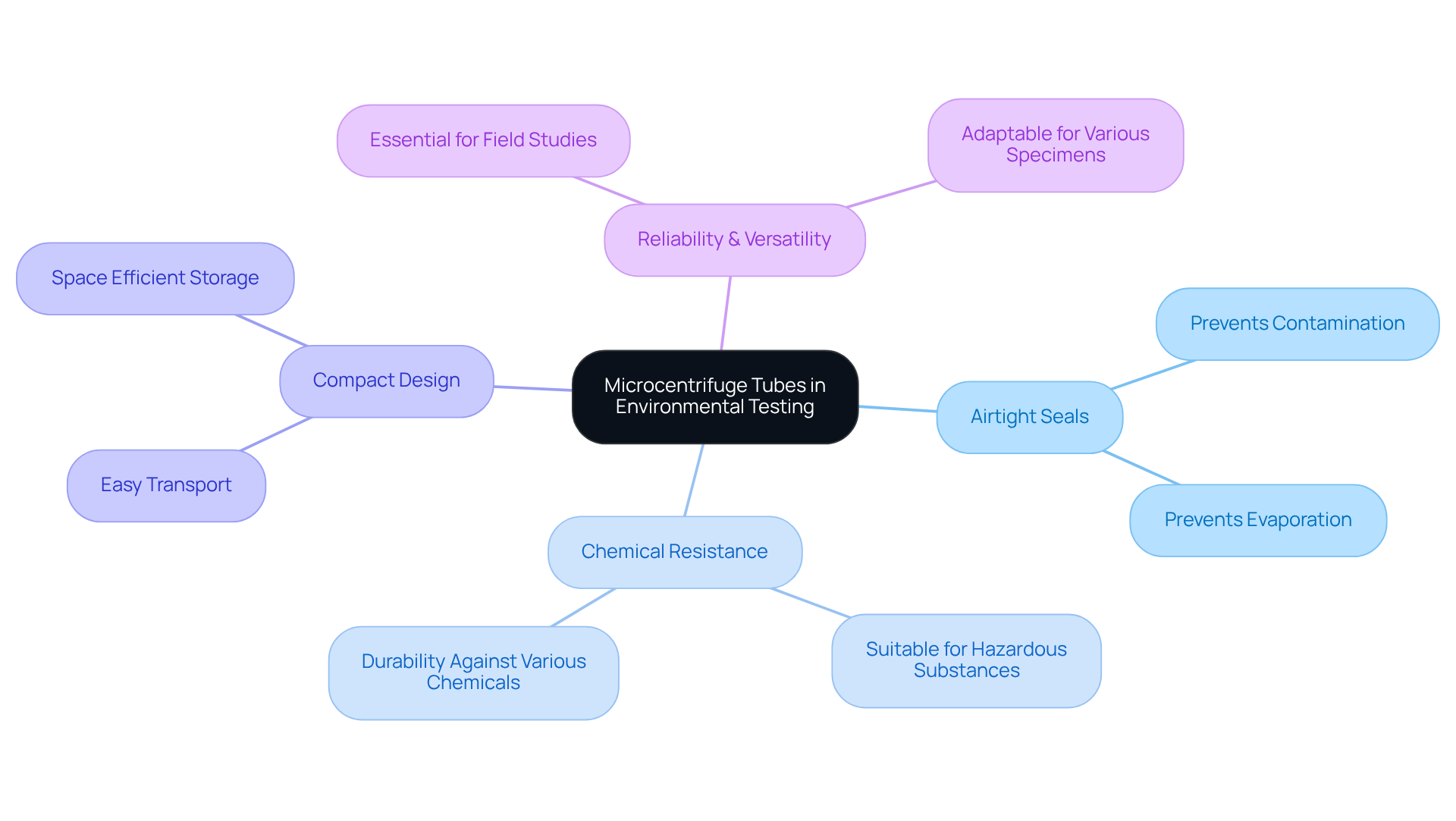
Educational Laboratories: Facilitating Experiments with Microcentrifuge Tubes
In educational laboratories, the utilization of microcentrifuge tube 0.5 ml is paramount for student experiments, as these tubes provide essential hands-on experience in sample handling and analysis. Their user-friendly design ensures accessibility for students across various educational levels, fostering an inclusive learning environment.
These containers, especially the microcentrifuge tube 0.5 ml, are particularly well-suited for conducting fundamental experiments, such as:
- Enzyme reactions
- DNA extraction
These experiments are critical for equipping students with practical skills necessary for their future careers in science. By engaging with these instruments, students not only enhance their technical abilities but also cultivate a deeper understanding of scientific principles, ultimately preparing them for professional success.
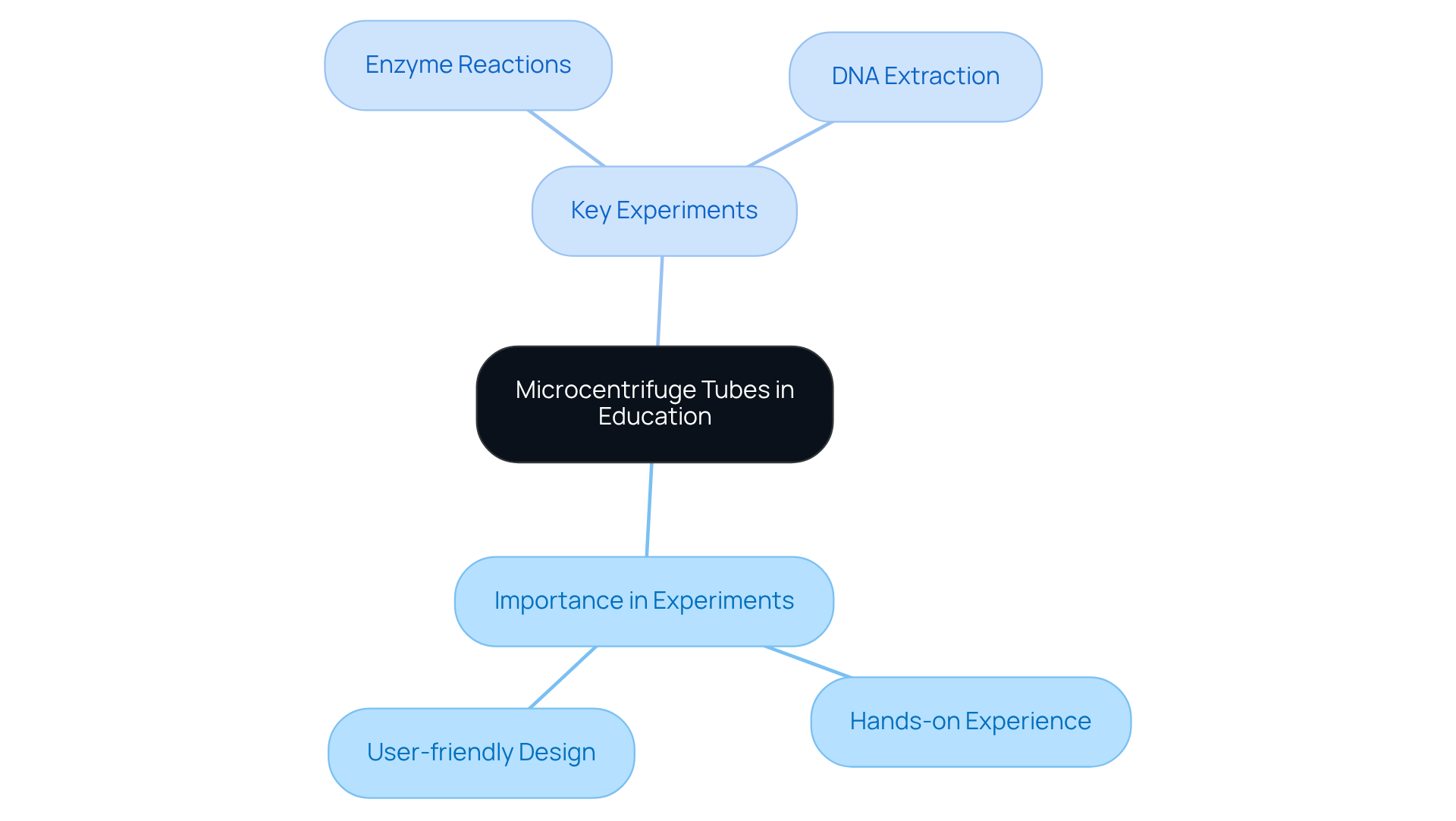
Biochemistry Applications: Conducting Enzyme Assays with Microcentrifuge Tubes
In the field of biochemistry, 0.5 ml small containers are indispensable for conducting enzyme assays. The microcentrifuge tube 0.5 ml's compact volume facilitates precise measurements of substrates and products, which is crucial for obtaining accurate assay results. Furthermore, the microcentrifuge tube 0.5 ml containers can be easily tagged and organized, streamlining the monitoring of multiple specimens throughout experiments. The microcentrifuge tube 0.5 ml's compatibility with various assay kits significantly enhances its utility, making it a vital tool in biochemical research. Ultimately, the adoption of these small containers not only improves the reliability of experimental outcomes but also reinforces the importance of high-quality scientific instruments in laboratory settings.
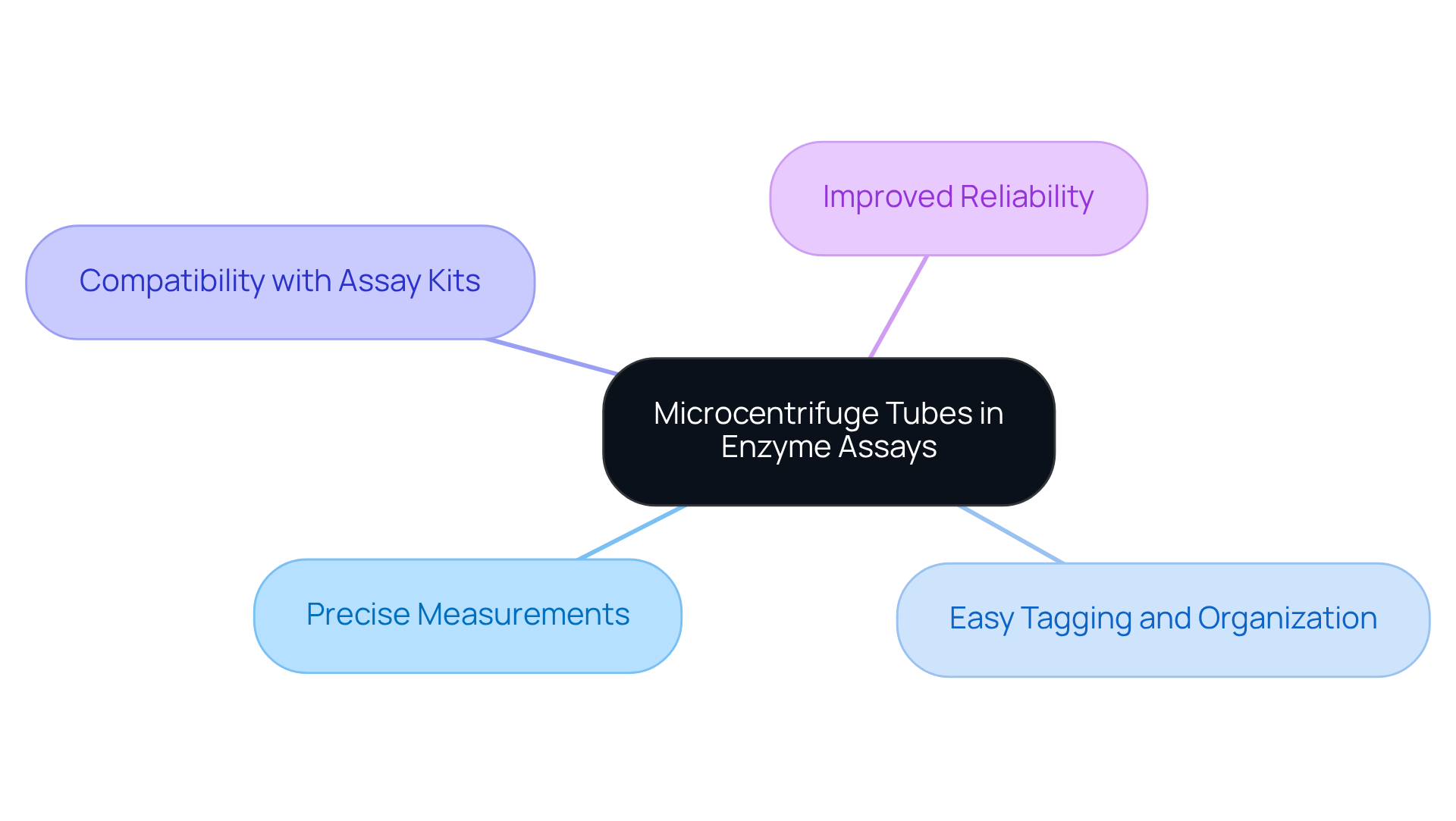
Quality Control: Ensuring Product Safety with Microcentrifuge Tubes
In quality control laboratories, the use of the microcentrifuge tube 0.5 ml is paramount for conducting tests on raw materials and finished products, particularly when employing advanced equipment such as the Hiranuma Aquacounter AQV-300 Volumetric and AQ-300 Coulometric Karl Fischer Titrators.
These containers, specifically the , are designed to securely hold specimens, significantly minimizing the risk of contamination and ensuring precise and dependable test results.
Furthermore, they are invaluable for storing reference samples, which are essential for compliance with regulatory standards, including those set forth by the Japanese Pharmacopoeia.
The clear design of these containers facilitates easy inspection of contents, thereby enhancing their critical role in the titration process within the pharmaceutical industry.
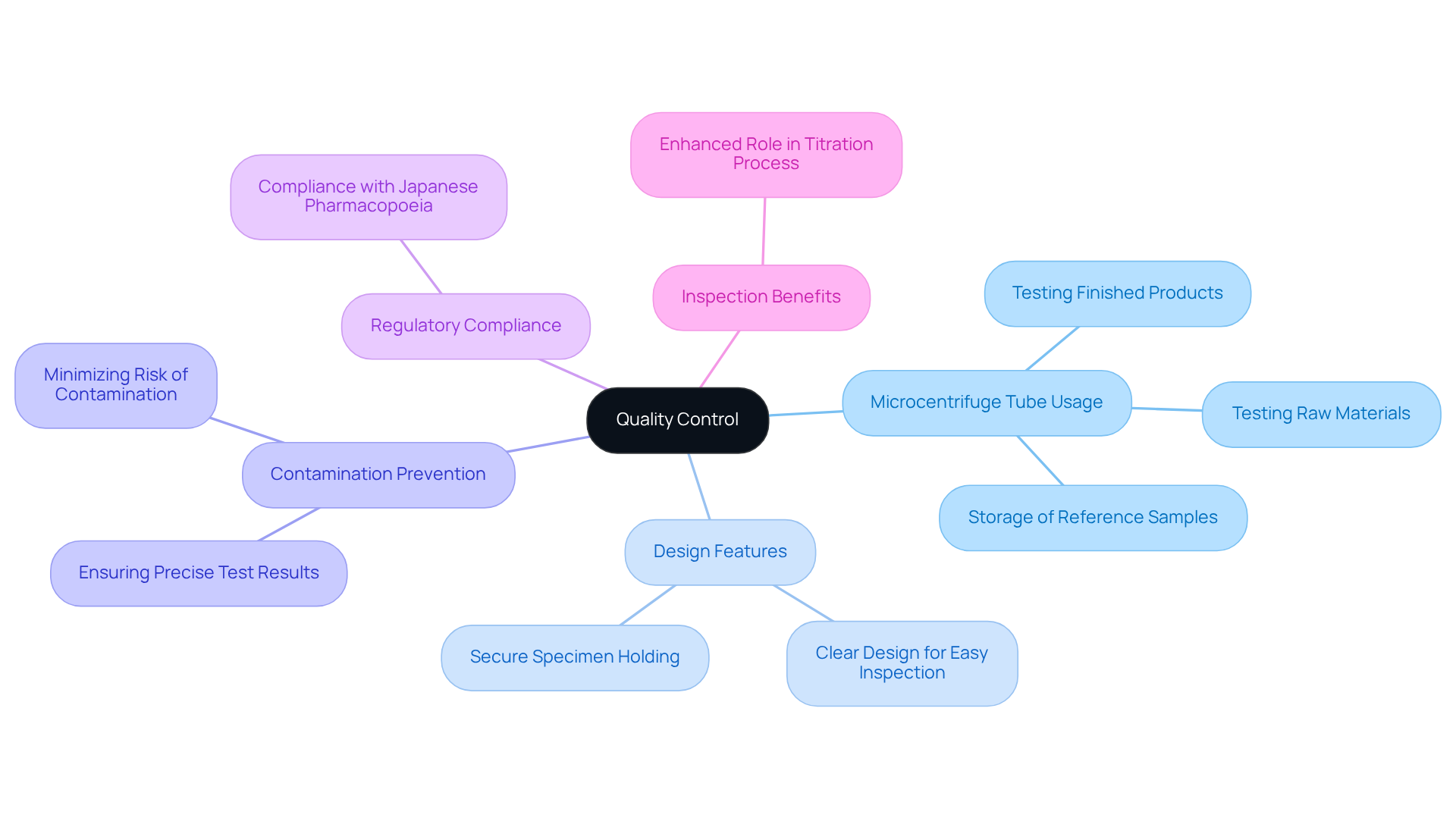
Research and Development: Exploring Innovative Uses for Microcentrifuge Tubes
In the realm of research and development, microcentrifuge tube 0.5 ml serves as an indispensable tool, utilized in a myriad of innovative applications. Their versatility empowers researchers to adapt these tubes for unique purposes, including:
- The formulation of new compounds
- The creation of micro-reaction environments
With their capacity to facilitate high-throughput screening assays, these microcentrifuge tube 0.5 ml significantly enhance laboratory capabilities. By exploring these advanced applications, laboratories can not only improve their research efficiency but also drive substantial advancements in scientific discovery. Integrating such high-quality instruments into experimental workflows is essential for fostering innovation in the scientific community.
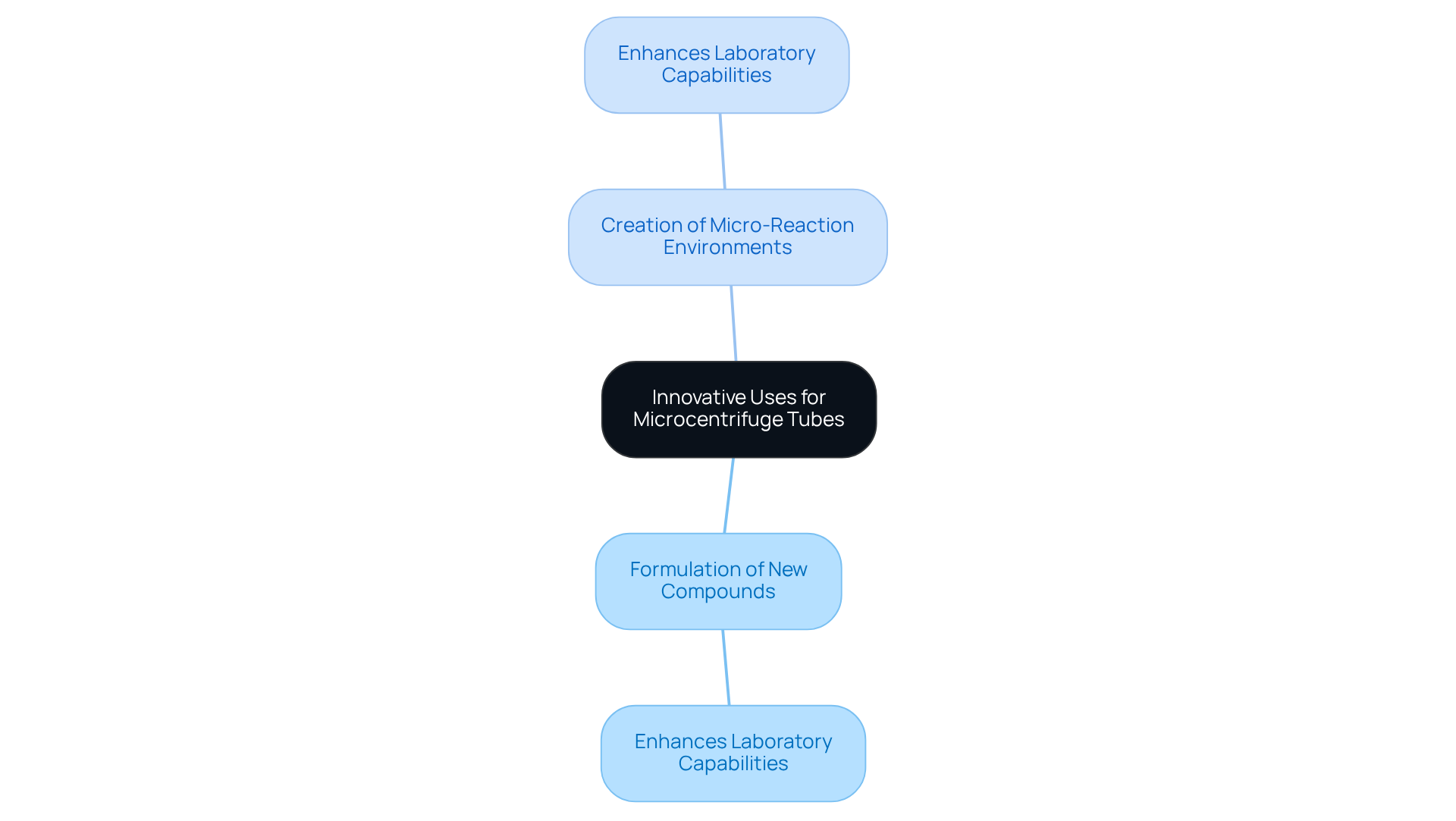
Conclusion
The versatility and reliability of 0.5 ml microcentrifuge tubes render them indispensable across diverse laboratory settings. These essential tools not only guarantee optimal specimen storage but also facilitate efficient sample preparation and analysis, playing a crucial role in enhancing the accuracy and integrity of scientific research. Their robust design and compatibility with multiple applications underscore their significance in upholding high standards in laboratory practices.
This article has explored the key uses of microcentrifuge tubes, highlighting their critical functions in:
- Molecular biology for DNA and RNA extraction
- Clinical diagnostics for sample collection
- Pharmaceutical research
- Environmental testing
The emphasis on quality control and educational use further illustrates how these tubes support advanced scientific endeavors while contributing to foundational learning in laboratory techniques.
Integrating high-quality microcentrifuge tubes into laboratory workflows is essential for driving innovation and ensuring reliable outcomes in scientific research. As laboratories continue to evolve, embracing the full potential of these tools will not only enhance research capabilities but also streamline processes, ultimately contributing to significant advancements across various fields of study.




